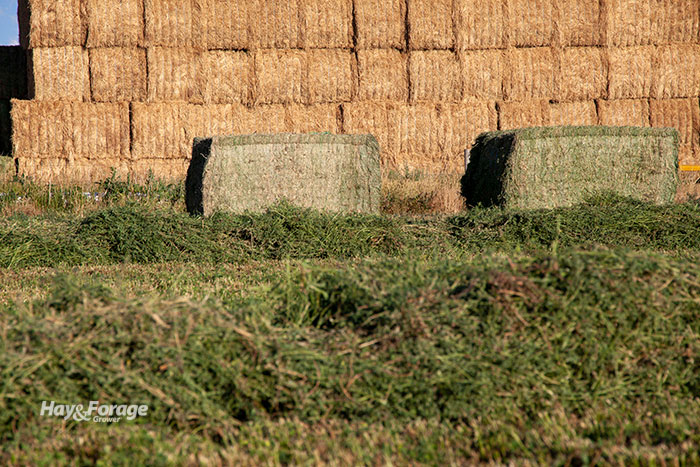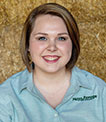
Hot hay comes with many red flags. The most commonly recognized of these potential hazards is combustion. However, hot hay can lead to multiple nutritional hazards as well.
Ben Beckman, a University of Nebraska extension educator, explained how storage conditions play a role in the situation, “Hay is not protected from oxygen like most of our anaerobic fermented feedstuffs, such as silage and haylage. High temperatures, moisture, and oxygen allow aerobic bacteria to grow, using plant protein and sugars for growth and producing carbon dioxide, water, and heat,” he said.
If these conditions persist for too long, hay will undergo a chemical change known as the Maillard reaction, which is a browning process that happens between amino acids (proteins) and sugars when subjected to heat. This is the same process that browns the edges of many foods that we eat, like seared steaks and toasted bread.
Hay that’s undergone the Maillard reaction will have a sweet, tobacco-like scent and a golden or caramel color. While this makes a tasty treat for livestock (animals love it!), the nutritional value of caramelized hay is next to nothing.
“The chemical reactions actually have tied up proteins and lowered the forage’s true crude protein content,” Beckman notes. “A standard crude protein feed analysis won’t be able to pick up this difference, though, and will report the percent like nothing is wrong, causing us to overestimate the available protein in our forage and under feed our animals.”
There is, however, a simple solution for an accurate nutritional analysis. “If you suspect you have bales that have had some caramelization occur, have the hay tested for heat-damaged protein (HDP) or acid detergent insoluble crude protein (ADICP),” Beckman urges. This may add to the testing cost, but you will receive much more accurate results. This will allow diets to be adjusted to meet nutritional needs.
Additional concern
Mold is another concern when dealing with wet, hot hay. The warm, moist conditions of some hay can be an ideal growing environment for mold. “While not always toxic, mold can reduce hay quality and palatability, so allowing animals the freedom to pick through heavily molded bales is a great option,” the extension specialist states. Beckman suggests not to force animals to eat moldy hay.

C.J. Weddle served as the 2020 Hay & Forage Grower editorial intern. She currently attends Mississippi State University, majoring in agricultural education, leadership, and communications. She grew up on a farm in Vardaman, Miss., where her family raises sweet potatoes and soybeans.

